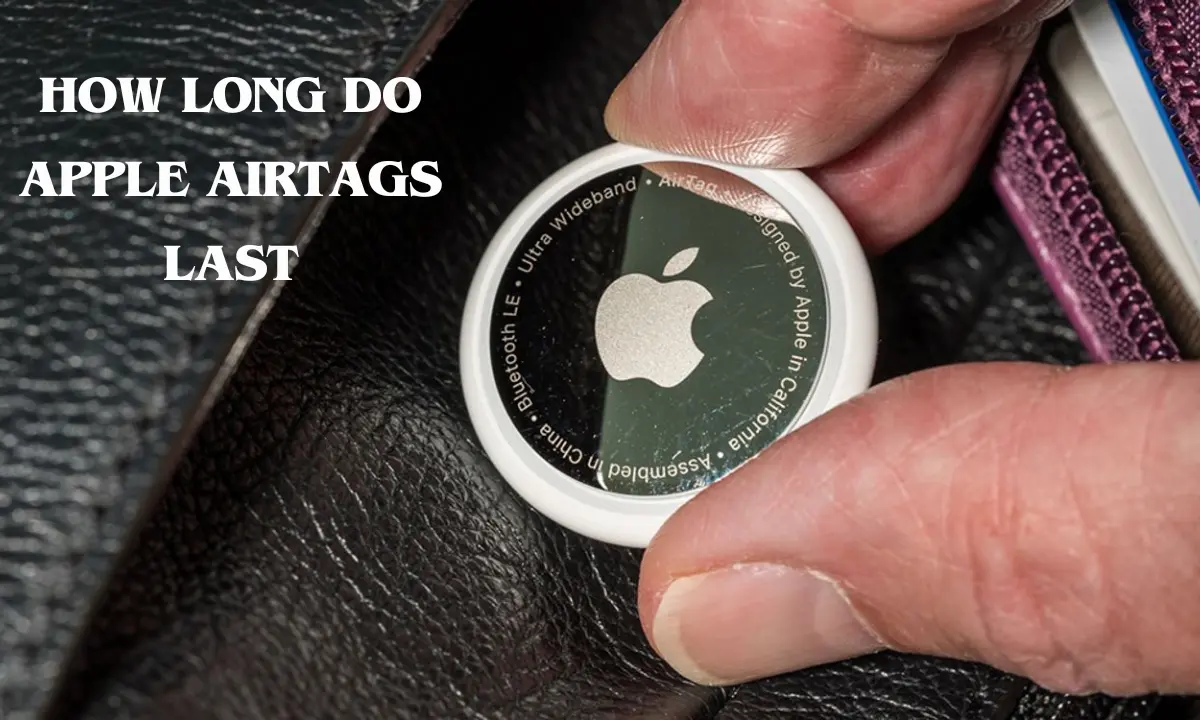How long do Apple airtags last: In a world where losing your belongings has become all too common, Apple’s AirTag has emerged as a beacon of hope for forgetful souls. These tiny tracking devices have revolutionized the way we keep tabs on our essentials, from keys and wallets to luggage and pets. But with their sleek design and advanced technology, many users wonder:
How long do Apple AirTags last?
In this comprehensive guide, we will explore the factors that influence the lifespan of Apple AirTags, tips to extend their longevity, and what to do when your AirTag eventually runs its course. So, let’s embark on this journey to uncover the secrets behind the lifespan of these nifty little gadgets.
Understanding the Basics
Before we delve into the longevity of Apple AirTags, let’s start with the basics. An Apple AirTag is a compact, coin-sized device designed to help you locate your belongings using the Find My app on your iOS device. It utilizes a combination of Bluetooth, U1 ultra-wideband technology, and the vast network of Apple devices to pinpoint the exact location of your lost item.
The Built-In Battery
The primary component that determines the lifespan of an Apple AirTag is its built-in battery. Unlike traditional replaceable batteries, Apple has equipped AirTags with a non-removable CR2032 coin cell battery. This battery is known for its reliability and longevity, typically providing power for various small electronic devices.
Estimated Battery Life
Apple claims that an AirTag’s battery can last up to one year under normal usage conditions. This estimate assumes that you use your AirTag to track your belongings a few times a day. However, the actual battery life can vary based on several factors.
Factors Influencing AirTag Lifespan
Usage Intensity:
The more frequently you use your AirTag, the faster its battery will drain. If you’re constantly tracking multiple items, the battery might not last the full year.
Environmental Conditions:
Extreme temperatures, especially excessive heat, can reduce the battery’s lifespan. Avoid exposing your AirTag to extreme conditions whenever possible.
Distance from Apple Devices:
AirTags rely on nearby Apple devices to relay their location. If your AirTag is often far from other Apple devices, it may use more power to establish connections, shortening its battery life.
Bluetooth and U1 Usage:
Enabling Bluetooth and the U1 chip for precision tracking can consume more power. If you don’t need these features all the time, consider toggling them off to save battery.
Firmware Updates:
Apple occasionally releases firmware updates for AirTags, which can improve efficiency and battery life. Make sure your AirTag is always up to date.
Tips to Extend Your AirTag’s Lifespan
Now that we understand the factors that can affect an AirTag’s lifespan, let’s explore some practical tips to help you get the most out of your tracking device.
Optimize Usage:
Use your AirTag judiciously. Don’t track items unnecessarily, and avoid overusing its features if it’s not required.
Manage Connectivity:
If you’re in an area with a strong network of Apple devices, you can reduce the AirTag’s workload. In areas with fewer devices, be mindful of its power consumption.
Turn Off Unneeded Features:
Only enable features like Precision Finding when you need them. Disabling Bluetooth and U1 when not in use can save power.
Keep It in Range:
Ensure your AirTag remains within the Bluetooth range of your Apple devices. If it’s too far away, it will use more energy to connect.
Store at Optimal Temperatures:
Avoid exposing your AirTag to extreme temperatures. Store it in a cool, dry place to maintain battery health.
When to Replace Your Apple AirTag
Despite your best efforts, there will come a time when your AirTag’s battery is no longer holding a charge effectively. When you notice that your AirTag is not responding as expected or has become unreliable, it’s time to replace the battery or the AirTag itself.
Recycling and Sustainability
Apple is committed to sustainability, and this extends to their products, including AirTags. When it’s time to replace your AirTag, make sure to recycle it properly. Apple provides recycling programs and instructions for AirTags and their batteries on their website. This helps reduce environmental impact and supports responsible disposal.
FAQs
How long does the battery in an Apple AirTag last?
Apple AirTags are designed to last up to one year under normal usage conditions. However, the actual battery life can vary based on factors like usage frequency, range, and environmental conditions.
Can I replace the battery in my Apple AirTag?
Yes, you can replace the battery in your Apple AirTag. It uses a standard CR2032 lithium coin-cell battery, and Apple has designed AirTags to be user-replaceable. When the battery is depleted, simply open the AirTag, remove the old battery, and insert a new one.
What happens when my AirTag’s battery dies?
When your AirTag’s battery is no longer functioning effectively, you will need to replace the battery with a new one. If you don’t replace it promptly, the AirTag will become unreliable and may not work as expected.
Can I track the battery life of my AirTag through the Find My app?
Yes, you can check the battery status of your AirTag through the Find My app on your Apple device. The app will provide an estimate of the remaining battery life, giving you a heads-up when it’s time to consider replacing the battery.
Conclusion
Apple AirTags offer a convenient solution to help you keep track of your belongings, but their longevity depends on various factors, with battery life being a critical component. By understanding the factors that influence battery life and following the tips mentioned in this guide, you can make the most of your AirTags and extend their lifespan. Remember to recycle your old AirTags responsibly to contribute to a more sustainable future.

